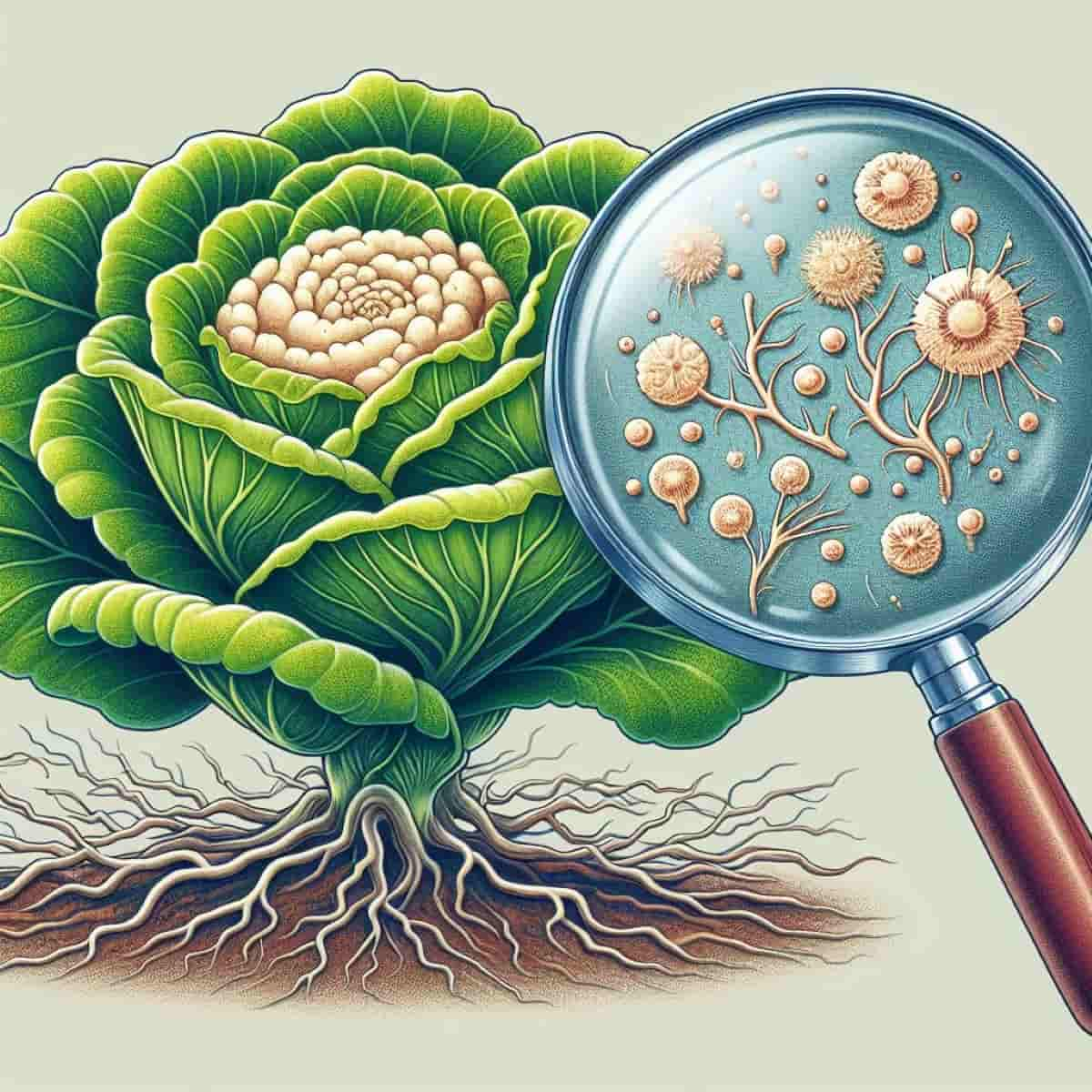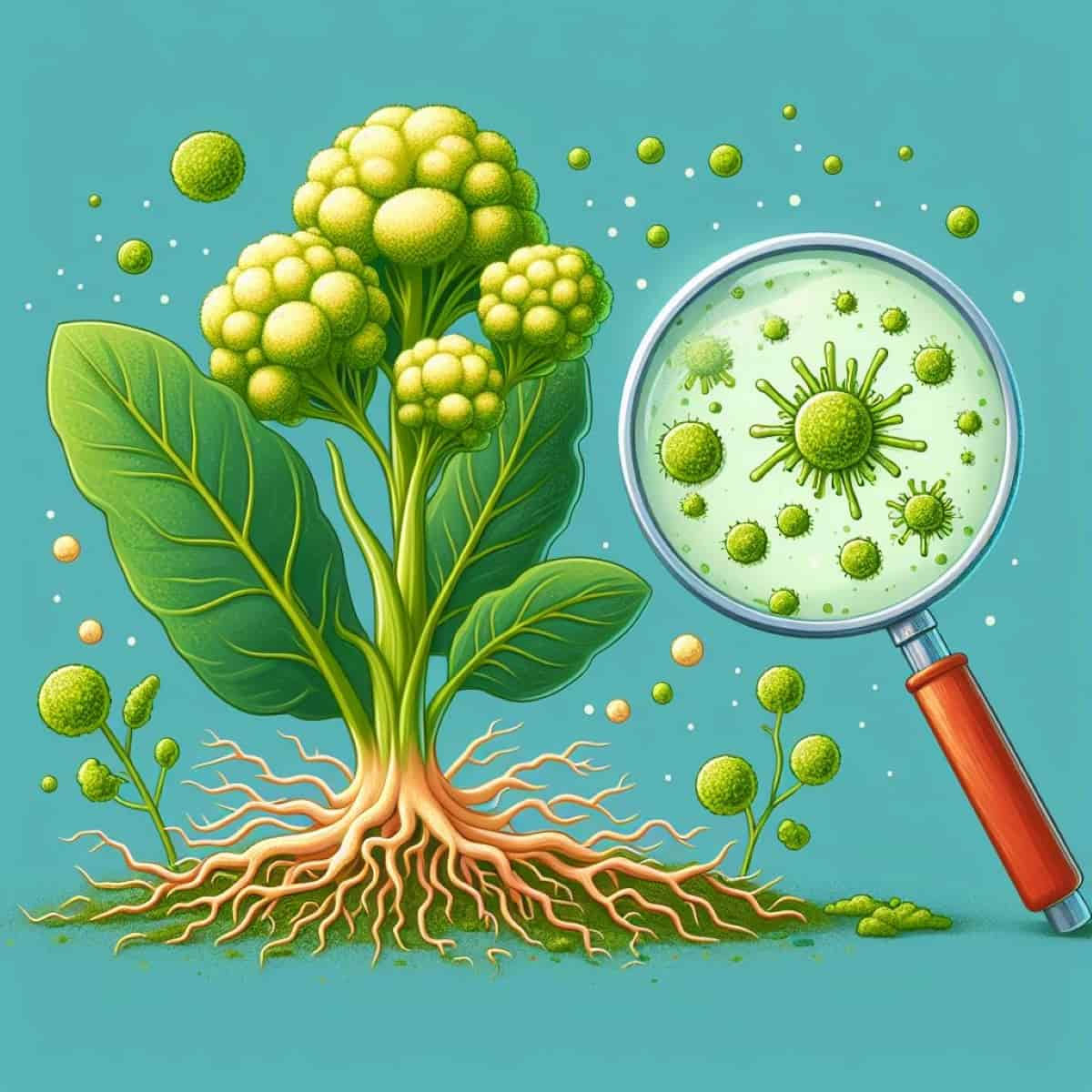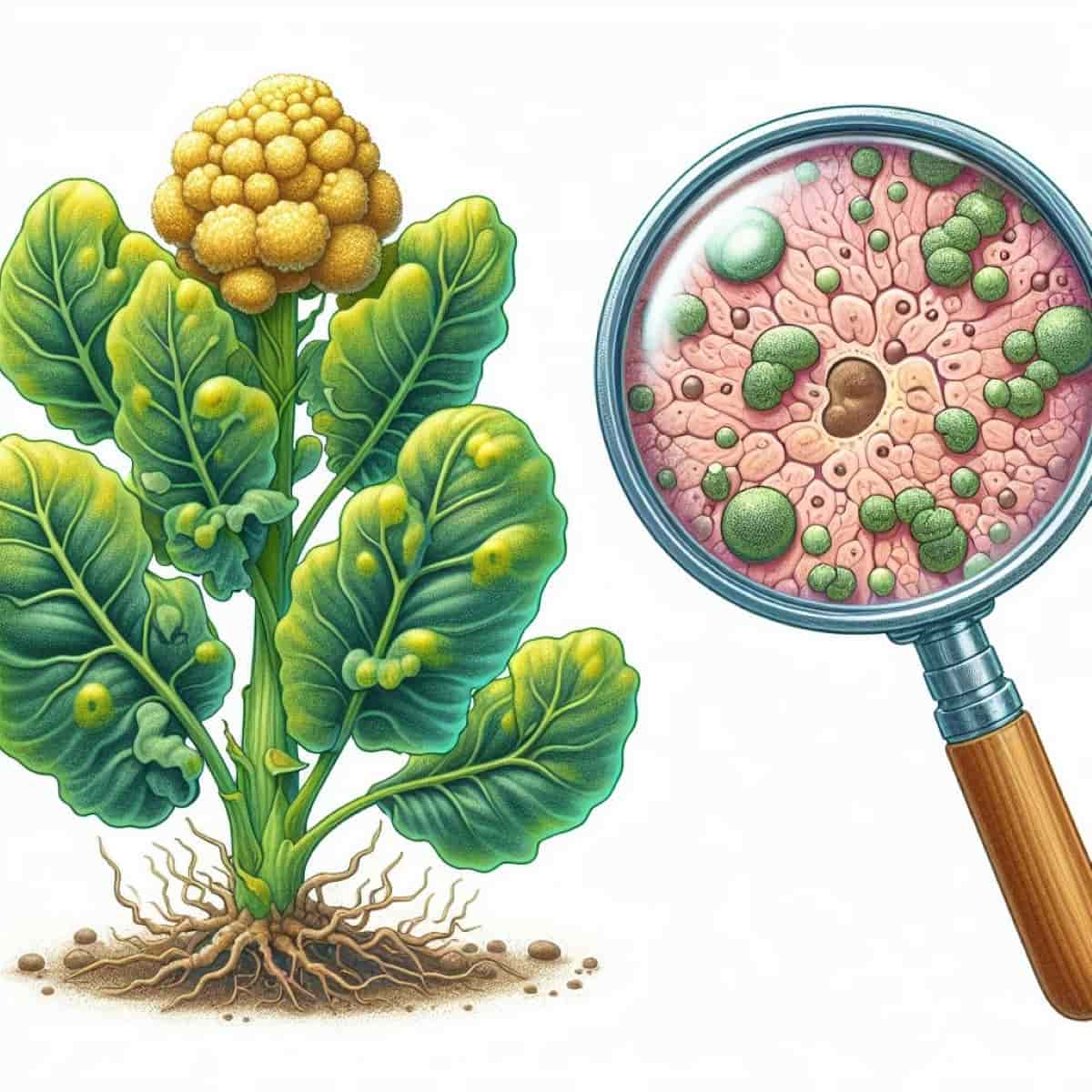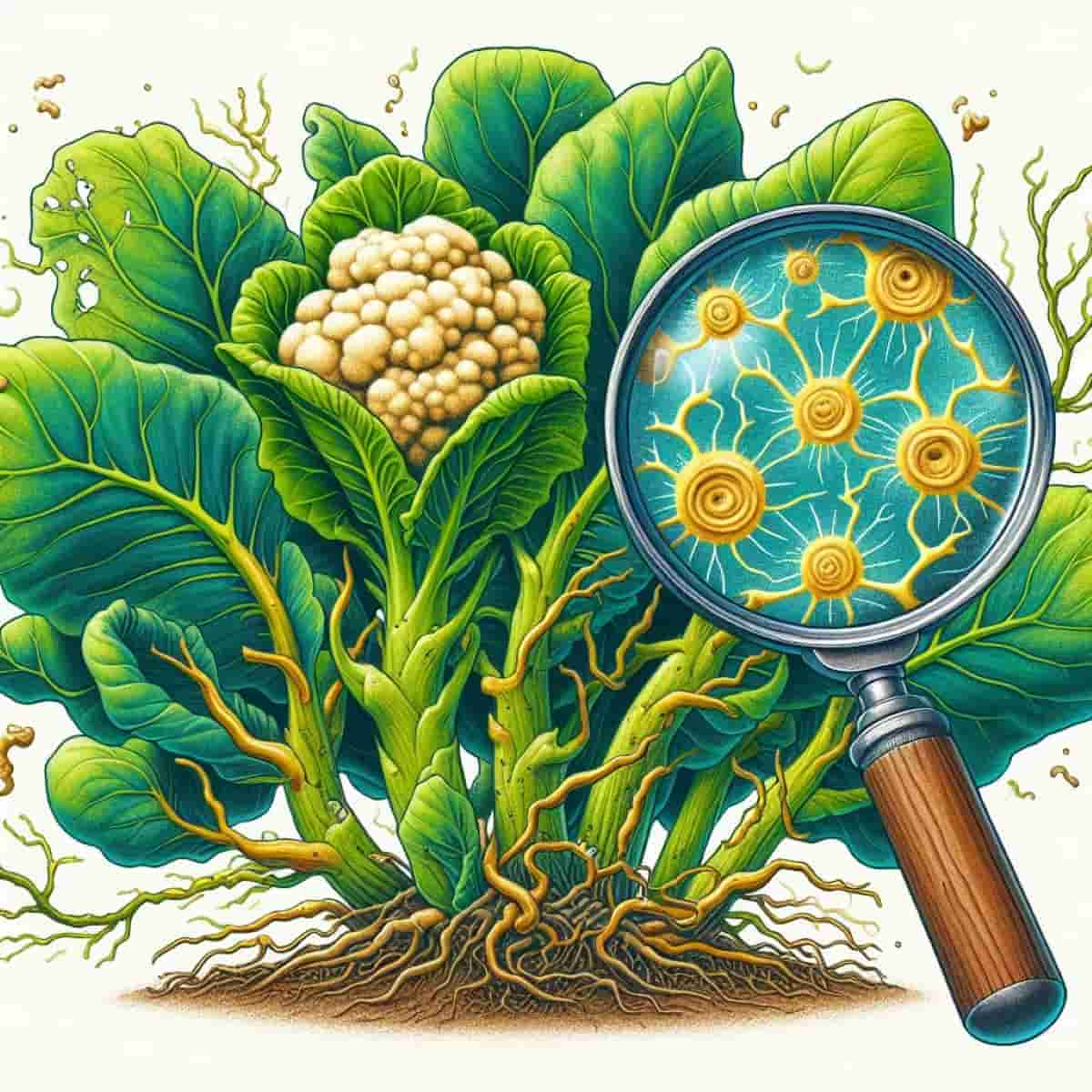Club root is a severe disease affecting cruciferous plants like cabbage, broccoli, cauliflower, kale, and radish. Plasmodiophora brassicae is the cause of it, which results in root swelling and deformity. In this article, you will learn how to prevent club roots by understanding their causes, identifying their signs and symptoms, and applying various control methods.

How to Prevent Club Root Disease
Understand the Causes Club Root
Plasmodiophora brassicae, a microscopic, single-celled pathogen that infects the roots of cruciferous plants through small wounds or natural openings, is the cause of club roots. The pathogen produces spores that multiply rapidly, causing root cells to enlarge and divide, leading to the formation of galls or clubs.
This interferes with the plant’s normal functioning, causing stunted growth, wilting, yellowing, and premature death. The spores can persist in soil for many years and can spread through water runoff, wind, animals, insects, tools, equipment, and contaminated soil or plant material. They are more likely to germinate and infect plants when the soil is moist and acidic (pH below 6.5).
Identify Club Root Signs and Symptoms in Cruciferous Plants
- Stunted growth and reduced vigor of the plant
- Wilting and drooping of leaves during hot or dry weather
- Yellowing or purpling of leaves
- Premature flowering or bolting
- Poor formation or quality of heads or roots
- Swollen, distorted, or rotten roots with galls or clubs
To confirm the presence of club roots, you can pull up a suspected plant and examine its roots for any signs of galling or clubbing. You can also cut open a gall or club and look for tiny white specks inside, which are the spores of Plasmodiophora brassicae.
Preventive Measures for Club Root: Soil Management and Crop Rotation
- Using certified disease-free seeds or transplants
- Avoid bringing in soil or plant material from infested areas
- Cleaning and disinfecting your tools, equipment, footwear, and clothing after working with cruciferous plants
- Removing and destroying any infected plants as soon as possible
- Avoid overwatering or poorly draining your soil
- Raising the pH of your soil to above 6.5 by adding lime or other amendments
- Rotating your crops with non-cruciferous plants every 3 to 4 years
Crop rotation is especially important for preventing club roots because it reduces the build-up of spores in the soil and breaks the life cycle of Plasmodiophora brassicae. You should avoid planting cruciferous plants in the same spot for at least 3 to 4 years after a club root infection. You should also avoid planting cruciferous plants after other susceptible crops, such as mustard, turnip, rutabaga, or canola.
Cultural Practices to Minimize Club Root Infections
- Using certified disease-free seeds and transplants
- Cleaning tools and equipment that have been in contact with infested soil
- Avoiding the movement of soil or water from infested areas
- Rotating crops with non-host plants, such as cereals, legumes, or grasses, for at least three to four years
- Improving soil drainage and aeration to reduce moisture and acidity
- Removing and destroying infected plants and roots as soon as possible
In case you missed it: How to Manage Clubroot in Home Garden: Symptoms, Causes, Cultural, Biological, Chemical, Natural, and Organic Control

Chemical Control of Club Root: Fungicides and Soil Amendments
- Lime: Applying lime can raise the soil pH and make it less favorable for the pathogen. The optimal pH range for club root control is 7.2 to 7.5. However, lime should be applied well in advance of planting, as it takes time to react with the soil.
- Boron: Applying boron can enhance plant resistance to club root and reduce root galling. Boron should be applied at a rate of 2 to 3 kg/ha before planting or can be applied as foliar spray during the growing season.
- Fumigants: Applying fumigants can kill the pathogen in the soil before planting. However, fumigants are expensive, toxic, and require special equipment and safety precautions. They should only be used as a last resort and in accordance with label instructions.
- Biofungicides: Applying bio fungicides can suppress the pathogen by introducing beneficial microorganisms that compete with or oppress it. Some examples of bio fungicides are Bacillus subtilis, Trichoderma harzianum, and Streptomyces spp. Biofungicides should be applied at planting or during the growing season.
Use Biological Control Methods for Managing Club Root
Nematodes and beneficial fungi are effective in controlling club root, a common root disease in crops. Nematodes, such as Steinernema feltiae, Heterorhabditis bacteriophora, and Meloidogyne hapla, target the pathogen or its spores in the soil, either by direct predation or disrupting its life cycle. These nematodes are most effective when applied during planting or the crop’s growing season.
Beneficial fungi, like Verticillium biguttatum, Fusarium oxysporum, and Phoma lingam, can directly attack or inhibit the pathogen’s growth, reducing its incidence and severity. These biological control methods provide a sustainable and environmentally friendly alternative to chemical treatments, contributing to soil health and biodiversity, essential for long-term agricultural sustainability.
Select Club Root-Resistant Cruciferous Plants
Another way to manage club roots is to select cruciferous plants that have resistance or tolerance to the pathogen. Resistance means that the plant can prevent or limit the infection, while tolerance means that the plant can withstand the infection without significant yield loss.
- Cabbage: Savoy King F1, Kilaton F1, Kilazol F1, Lodero F1
- Broccoli: Monclano F1, Belstar F1, Ironman F1
- Cauliflower: Clarify F1, Clapton F1
- Radish: Celesta F1, Defender F1
In case you missed it: Root Rot Disease Management in Cotton: Symptoms, Treatment, Chemical, Biological, Natural, and Organic Control

Integrated Pest Management (IPM) Strategies for Club Root Prevention
Integrated Pest Management (IPM) is an approach that combines different methods to prevent and control pests and diseases sustainably.
- Crop rotation: Avoid planting cruciferous crops in the same field for at least three years to reduce the amount of fungus in the soil.
- Resistant varieties: Choose varieties that have some resistance or tolerance to club root. Check the seed catalogs or labels for information on club root resistance.
- Soil pH: Club root thrives in acidic soils. Lime the soil to raise the pH to above 7.2, which inhibits the growth of the fungus.
- Sanitation: Clean and disinfect all equipment, tools, and footwear that come in contact with infested soil. Do not move soil or plant debris from infested fields to other areas.
- Biofumigation: Grow biofumigant crops such as mustard or rapeseed and incorporate them into the soil before planting cruciferous crops. These crops release compounds that suppress club roots and other soil-borne pathogens.
Frequently Asked Questions (FAQ) on Club Root
How is Club Root Spread in Gardens and Farms?
Discuss the transmission methods of the club root pathogen, including soil movement and infected plant material.
How Long Can Club Root Pathogens Remain Viable in Soil?
These pathogen spores can survive in the soil for several years ranging from 4 to 20 years, depending on various factors such as soil conditions, temperature, and humidity.
In case you missed it: Dry Root Rot Management in Green Gram: Symptoms, Identification, Treatment, Chemical, Biological, Natural, and Organic Control

Conclusion
It’s critical to identify early indications, such as swelling roots and yellowing foliage, in order to avoid club roots. Maintaining alkaline soil, switching up non-host crops, and disinfecting equipment are all good practices. Resistant types and biological measures also aid the management of this tenacious infection.
- Deworming Schedule for Dogs/Puppies: A Beginners Guide
- How to Prevent and Control Parasites in Goats
- Beneficial Insects in Pest Management
- Natural Solutions for Pest Control in Flower Gardens
- Types of Fungicides Used in Agriculture
- Common Issues in the Fruit Development Stage of Pomegranate Farming
- Fruit Development Issues in Papaya: Easy Solutions and Treatment
- Soil-Borne Diseases and How to Protect Your Plants
- Practices to Prevent Disease Spread in the Garden